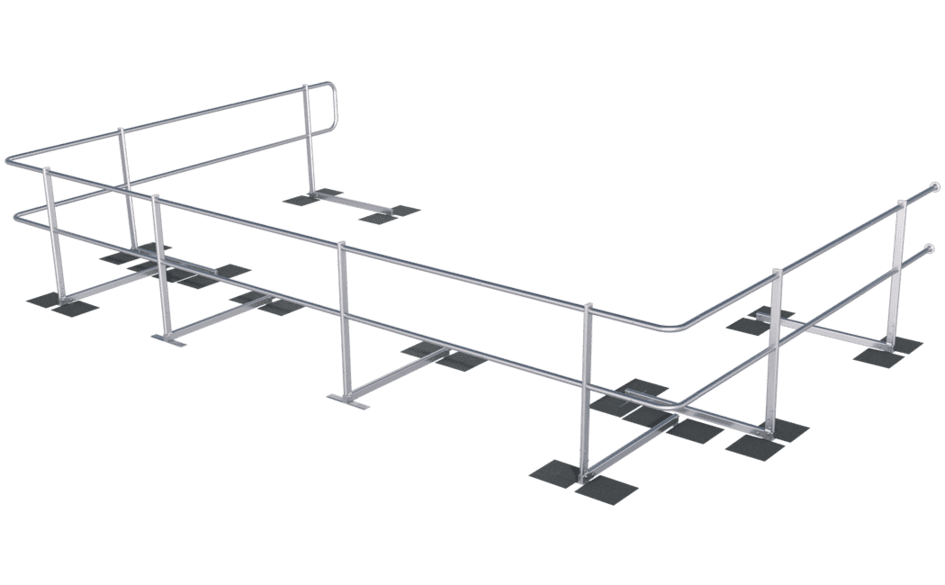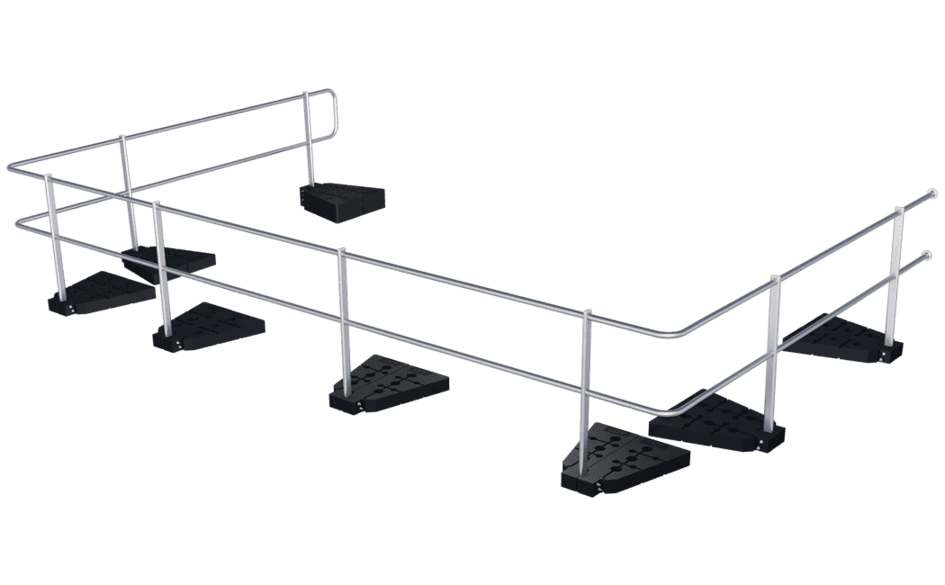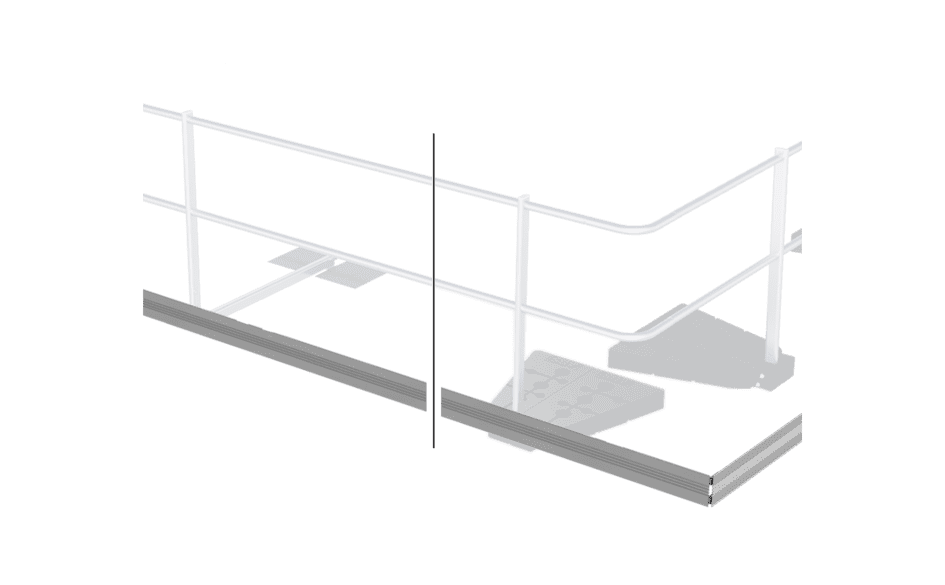Collective protection
Guard rail
Guard rails are intended to prevent individuals working or residing in a fall danger zone from toppling over the falling edge. Such rails are designed to prevent life-threatening falls from high-up. Guard rails belong to the category “collective safety” equipment as they provide everyone on the roof with the same level of protection. This means that these should be given preference over individual personal fall protection equipment (PPE).
What types of guard rails are there?
According to ASR A2.1 , there are three ways of setting up a guard rail system. The first option is to install a filled-in guard rail. This guard rail may also be filled in using vertical rods.
The most commonly-used version of a guard rail is a hand and knee rail. If the guard rail is installed directly at a falling edge without a parapet or any other type of border, an additional toe board is required to prevent people from slipping under the knee rail.
What requirements does a hand and knee rail have to fulfil?


Guard rails must be at least 1 m high. The open space between the hand and knee rails, resp. between the knee rail and the toe board, must not exceed 0.5 m. The toe board must be at least 0.05 m high.
The hand and knee rail must be designed and installed to withstand a horizontal load of 1 kN/m applied to the upper edge of the guard rail.
Guard rails can also be held in place on a roof by means of weights - or by being firmly secured, e.g. by being fused onto a bitumen surface. A non-fall-through-resistant domed rooflight can also be secured using a guard rail.


